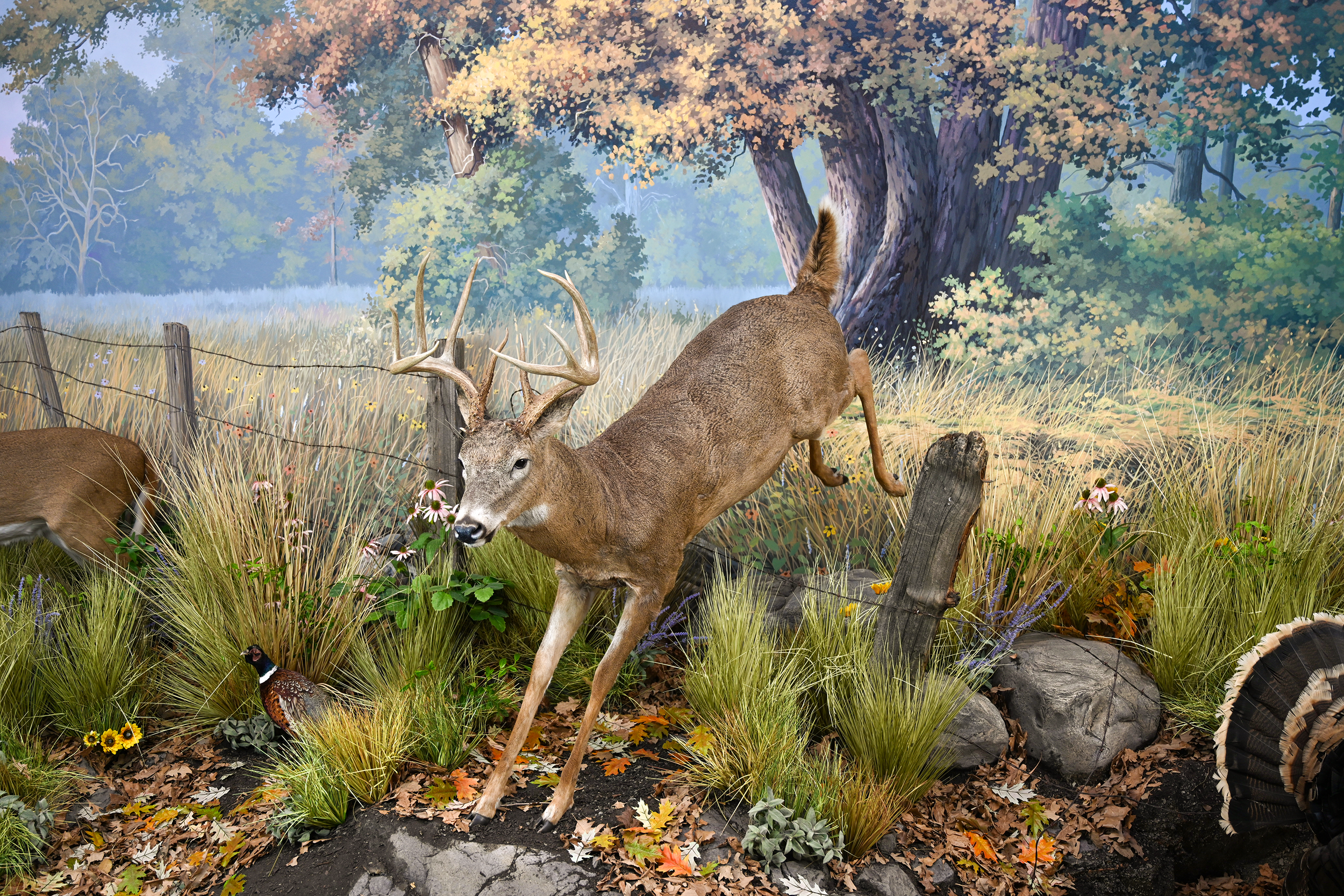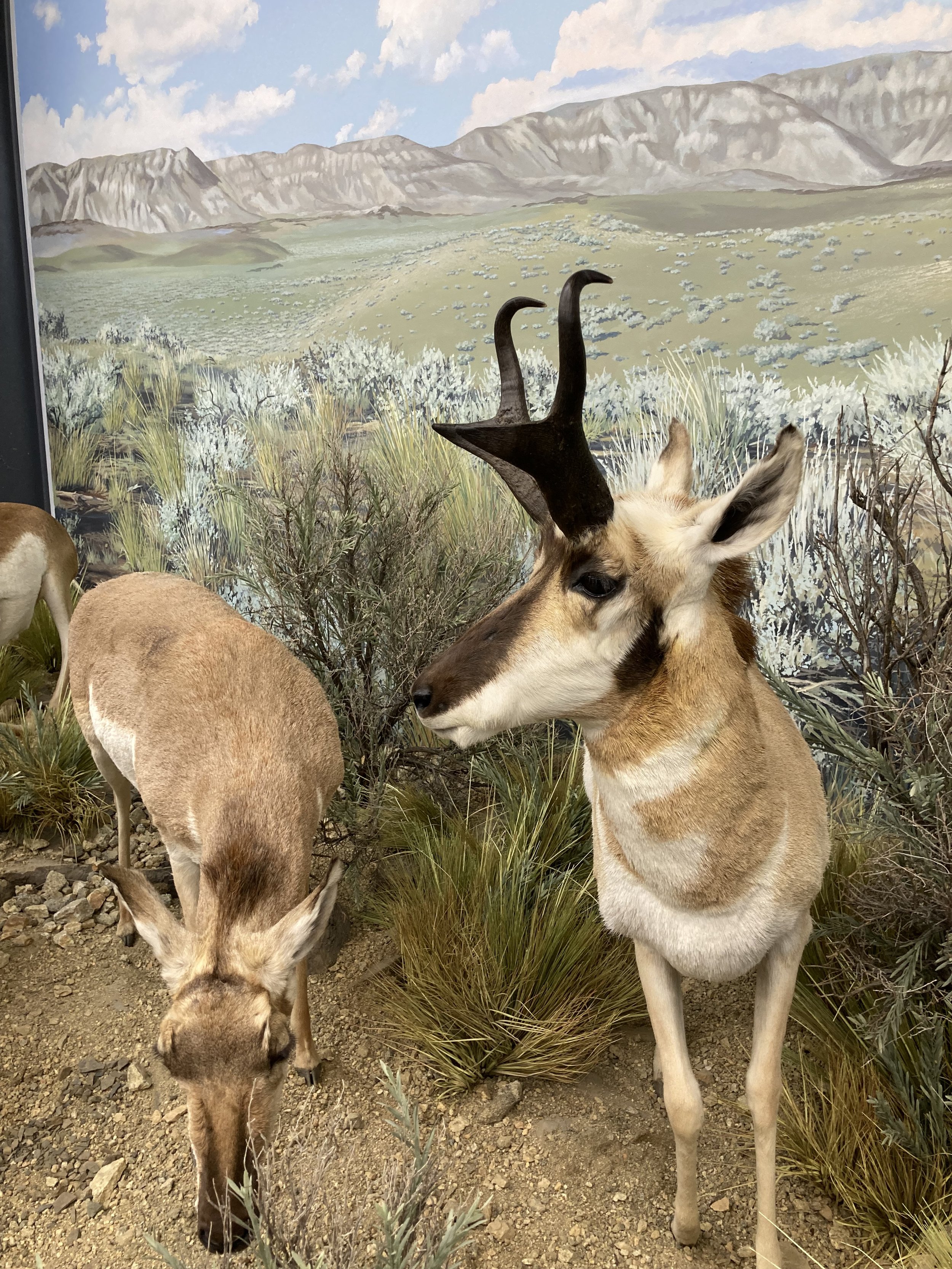
Wildlife Conservation
“The Wildlife and its habitat cannot speak, so we must and we will.”
“Wildlife are a public resource—they are not a domain belonging to hunters or non-hunters. At the end of the day our actions must reflect what is best for our natural world, and that is proper wildlife management through sustainable use”
“One Natural World, One Humanity, One Chance, Conservation Matters”
The foregoing quotes echo our belief at Nature’s Window, Lake Chelan Museum of Wildlife, Natural History, and Art. Our mission to educate the public about the role of wildlife management and conservation is the work we do to help our natural environment and to conserve our valuable wildlife resources. The primary theme of the museum is that healthy wildlife is important to the natural environment and the security of our planet.
We support the belief that humanity is not whole if separated from the natural world. We are members and supporters of a number of wildlife conservation organizations that support conservation programs and environmental issues. Donating to groups such as Ducks Unlimited, Wild Sheep Foundation, Pheasants Forever, Rocky Mountain Elk Foundation, Mule Deer Foundation, Safari Club International, Boone and Crockett Club, and others help support wildlife and their habitat for future generations. It is estimated that these groups alone provide almost one half billion dollars per year to conservation efforts. In addition, many thousands of hours of volunteer work by members of these groups each year contribute to the protection and enhancement for wildlife and recreational lands.
A quick look at history reveals that by the mid 1800’s, hunters and anglers realized they needed to set harvest limits in order to protect the rapidly disappearing wildlife and habitat in the fast-growing new frontiers of the United States of America. As early settlers moved west across North America wildlife populations were disappearing due to market and subsistence hunting and habitat loss. Many species were on the edge of extinction. Bison, elk, bighorn sheep, bears, pronghorn, and whitetail deer had almost disappeared across the country.
Hunters like Theodore Roosevelt and George Bird Grinnell organized other sportsmen to push for hunting regulations and formed conservation groups to protect habitat and wildlife. Their efforts are credited for establishing the North American Model of Wildlife Conservation to help in the rescue and recovery of the vanishing wildlife resources. This model has two primary principles: that our fish and wildlife belong to all Americans, and that they need to be managed so their populations will be sustained forever.
The North American Model of Wildlife Conservation
The main principles of the model consist of seven guidelines:
Wildlife is held in the Public Trust.
In North America, natural resources and wildlife on public lands are managed by government agencies to ensure current and future generations always have wildlife and wild places to enjoy.
Prohibition on commerce of dead wildlife.
Commercial hunting and the sale of wildlife is illegal.
Democratic rule of law.
Hunting and fishing laws are created through the public process where everyone has the opportunity and responsibility to develop systems of wildlife conservation and use.
Hunting opportunity for all.
Every citizen has the right under the law to hunt and fish in the United States and Canada.
Non-frivolous use.
Wildlife may legally be killed under strict guidelines for food, fur, self-defense and protection of property. Laws prohibit casual killing of wildlife for antlers, horns or feathers.
International resource.
Wildlife and fish migrate freely across boundaries between states, provinces, and countries. The United States, Canada, and Mexico jointly coordinate wildlife and habitat management strategies such as the Migratory Bird Act of 1918, making it illegal to kill migratory birds, except as allowed by specific hunting regulations and seasons.
Scientific Management.
Science is used as the appropriate basis for wildlife policy.
Hunters also recognized the need for sustainable funding for wildlife stewardship. In 1937 sportsmen successfully lobbied Congress to pass the Pittman- Robertson Act that place an excise tax of 11% of the sale of all sporting firearms and ammunition. Later in 1950 a similar law, the Dingell-Johnson Act, was passed with a sales tax of 10% on all fishing equipment. Between 1937 and 2022 over $15 billion dollars have been collected for Federal conservation programs. In 2022 it is reported that $1.1 billion dollars have been collected from P-R excise taxes and another $400 million from fishing equipment and boat fuel. These excise taxes are distributed to all 50 states for wildlife conservation and hunter education. In addition, millions of dollars in license and tags fees are paid for by hunters and anglers every year.
The financial support from men and women involved in hunting, fishing, and shooting activities play a significant role in wildlife conservation and species recovery from the late 1800’s. As an example, the following hunted species have experienced significant recovery:
So, what is conservation? In many ways it is one of the most complex functions of our society, as it involves our culture, environment, climate, biological diversity, politics, economics and the natural nature of people. Put simply, however, conservation is the planned protection, restoration, and management of natural resources to ensure the sustainable wise use and enjoyment by present and future generations. Wildlife requires food, water, shelter, and open spaces. The primary tenant is that resources are used in a sustainable manner without waste or abuse to the future use of the resource. Land is used for farming over and over again while producing valuable products each year. Forests are harvested periodically for valuable wood products in a manner that sustains future forests for subsequent harvests. Animals are managed and used for food while being bred for future use. Likewise, wild animals are harvested for consumption and to keep populations in balance with the available habitat and to reduce diseases from over population.
Preservation on the other hand seeks to prevent the use of nature from harmful intrusion. Forests are not logged, roads are not built in wilderness areas, and harvest of other resources are not allowed including the use of animals for consumption. “Let nature take its course” without assistance or intrusion from man. In effect, all flora and fauna are left alone to the whims of the natural environment. If forests catch fire they are left to burn out on their own. If plants or animals become diseased, they are left to die and regenerate naturally if at all. Some species of animals do not do well in preserves, while others may flourish. The same holds for various plants. National forests are exposed to conservation while National Parks are not allowed to be developed or altered in any way and are considered wilderness areas. This can lead to the continuous loss of biodiversity, while allowing the steady increase of invasive species. Whereas private lands and public lands that are managed under conservation principles, can be much more productive and allow for greater diversity of native species with informed management techniques.
Bighorn sheep 1957 there were 25,000
Today there are 80,000
Waterfowl 1901 there were few
Today there are 46,000,000
Rocky Mountain elk 1907 there were 41,000
Today there are 1,000,000
Wild turkey 1900 there were 100,000
Today there are 7,000,000
Whitetailed deer 1900 there were 500,000
Today there are 32,000,000
Pronghorn Antelope 1950 there were 12,000
Today there are 1,100,000
Other non-game species have been saved as well from the habitat enhancements provided by these conservation efforts.
Wild places and wild creatures need your help if they are to endure. Support the conservation organizations of your choice. Get involved and become a part of the North American Wildlife Conservation legacy! Conservation organizations have been instrumental in habitat improvements and restoration helping a wide variety of wildlife. We encourage outdoor activities and purchase of hunting and fishing licenses to help funding for wildlife programs.









